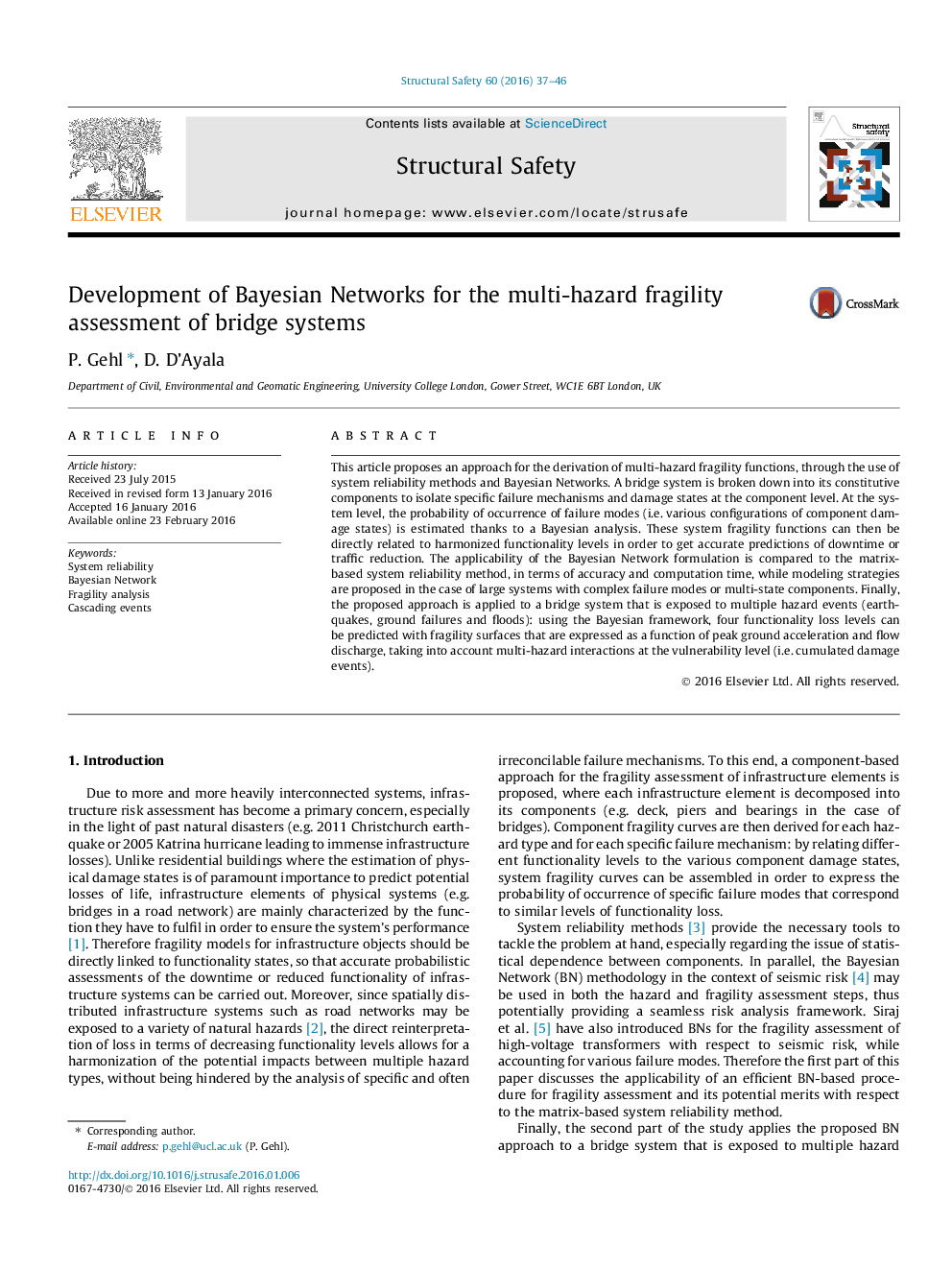| کد مقاله | کد نشریه | سال انتشار | مقاله انگلیسی | نسخه تمام متن |
|---|---|---|---|---|
| 307443 | 513362 | 2016 | 10 صفحه PDF | دانلود رایگان |
• A Bayesian-based method is proposed for the fragility analysis of bridge systems.
• The Bayesian approach is compared with the matrix-based system reliability method.
• A Bayesian Network is built for the multi-risk fragility analysis of a bridge.
• Component fragility curves are assembled for earthquake, flood and ground failure.
• Hazard-independent functionality loss levels allow for a multi-risk harmonization.
This article proposes an approach for the derivation of multi-hazard fragility functions, through the use of system reliability methods and Bayesian Networks. A bridge system is broken down into its constitutive components to isolate specific failure mechanisms and damage states at the component level. At the system level, the probability of occurrence of failure modes (i.e. various configurations of component damage states) is estimated thanks to a Bayesian analysis. These system fragility functions can then be directly related to harmonized functionality levels in order to get accurate predictions of downtime or traffic reduction. The applicability of the Bayesian Network formulation is compared to the matrix-based system reliability method, in terms of accuracy and computation time, while modeling strategies are proposed in the case of large systems with complex failure modes or multi-state components. Finally, the proposed approach is applied to a bridge system that is exposed to multiple hazard events (earthquakes, ground failures and floods): using the Bayesian framework, four functionality loss levels can be predicted with fragility surfaces that are expressed as a function of peak ground acceleration and flow discharge, taking into account multi-hazard interactions at the vulnerability level (i.e. cumulated damage events).
Journal: Structural Safety - Volume 60, May 2016, Pages 37–46
